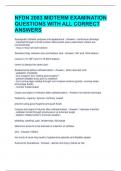dy
we
Solutions Manual
“A First Course in Digital Communications”
Sh
Cambridge University Press
Ha H. Nguyen
Department of Electrical & Computer Engineering
&
University of Saskatchewan
Saskatoon, SK, CANADA S7N 5A9
Ed Shwedyk
Department of Electrical & Computer Engineering
University of Manitoba
en
Winnipeg, MB, CANADA R3T 5V6
August 5, 2011
uy
Ng
, k
dy
Preface
we
This Solutions Manual was last updated in August, 2011. We appreciate receiving comments
and corrections you might have on the current version. Please send emails to
or .
Sh
&
en
uy
Ng
1
, k
dy
Chapter 2
Deterministic Signal Characterization
we
and Analysis
(a) Given {Ak , qBk }, i.e., s(t) =
Then Ck = Ak + Bk , θk = tan−1 B
2 2 Sh
P2.1 First let us establish (or review) the relationships for real signals
P∞
k=0 [Ak cos (2πkfr t) + Bk sin (2πkfr t)], Ak , Bk are real.
Ak , where we write s(t) as
k
s(t) =
∞
X
Ck cos (2πkfr t − θk )
&
k=0
If we choose to write it as
∞
X
s(t) = Ck cos (2πkfr t + θk )
k=0
en
Bk
then the phase becomes θk = − tan−1 Ak . Further
Ak − jBk
Dk =
2
uy
D−k = Dk∗ , k = 1, 2, 3, . . .
D0 = A0 (B0 = 0 always).
(b) Given {Ck , θk } then Ak = Ck cos θk , Bk = Ck sin θk . They are obtained from:
∞
X ∞
X
Ng
s(t) = Ck cos (2πkfr t − θk ) = [Ck cos θk cos(2πkfr t) + Ck sin θk sin(2πkfr t)]
k=0 k=0
Now s(t) can written as:
∞
( )
X ej[2πkfr t−θk ] + e−j[2πkfr t−θk ]
s(t) = Ck
2
k=0
· ¸ X∞ · ¸
e−jθ0 + ejθ0 Ck −jθk j2πkfr t Ck jθk −j2πkfr t
s(t) = C0 + e e + e e
2 2 2
| {z } k=1
cos θ0
1
, Nguyen & Shwedyk A First Course in Digital Communications
Therefore
D0 = C0 cos θ0 where θ0 is either 0 or π
k
Ck −jθk
Dk = e , k = 1, 2, 3, . . .
2
dy
What about negative frequencies? Write the third term as C2k ejθk ej[2πk·(−fr )·t] , where
(−fr ) is interpreted as negative frequency. Therefore D−k = C2k e+jθk , i.e., D−k = Dk∗ .
(c) Given {Dk }, then Ak = 2R{Dk } and Bk = −2I{Dk }. Also Ck = 2|Dk |, θk = −∠Dk ,
where Dk is in general complex and written as Dk = |Dk |ej∠Dk .
we
Remark: Even though given any set of the coefficients, we can find the other 2 sets, we
can only determine {Ak , Bk } or {Dk } from the signal, s(t), i.e., there is no method to
determine {Ck , θk } directly.
Consider now that s(t) is a complex, periodic time signal with period T = f1r , i.e.,
Sh
s(t) = sR (t) + jsI (t) where the real and imaginary components, sR (t), sI (t), are each
periodic with period T = f1r . Again we represent s(t) in terms of the orthogonal basis
set {cos (2πkfr t), sin (2πkfr t)}k=1,2,... . That is
s(t) =
∞
X
k=0
[Ak cos (2πkfr t) + Bk sin (2πkfr t)] (2.1)
2
R 2
R
&
where Ak = T t∈T s(t) cos (2πkfr t)dt; Bk = T t∈T s(t) sin (2πkfr t)dt are now complex
numbers.
One approach to finding Ak , Bk is to express sR (t), sI (t) in their own individual Fourier
series, and then combine to determine Ak , Bk . That is
en
∞ h
X i
(R) (R)
sR (t) = Ak cos (2πkfr t) + Bk sin (2πkfr t)
k=0
∞ h
X i
(I) (I)
sI (t) = Ak cos (2πkfr t) + Bk sin (2πkfr t)
uy
k=0
X ³ (R)
∞ ´ ³ ´
⇒ s(t) = A + jA(I) cos (2πkfr t) + B (R) + jB (I) sin (2πkfr t)
k k k k
k=0 | {z } | {z }
=Ak =Bk
Ng
(d) So now suppose we are given {Ak , Bk }. How do we determine {Ck , θk } and Dk ?
Again, (2.1) can be written as
∞ ·µ
X ¶ µ ¶ ¸
Ak − jBk j2πkfr t Ak + jBk −j2πkfr t
s(t) = e + e
2 2
k=0
Ak −jBk P∞ Ak +jBk −j2πkfr t
As before, define Dk as Dk ≡ 2 and note that the term k=0 2 e can
be written as
0
X 0
X µ ¶ 0
X
Ak + jB−k j2πkfr t Ak − jBk
e = ej2πkfr t = Dk ej2πkfr t
2 2
k=−∞ k=−∞ k=−∞
Solutions Page 2–2











